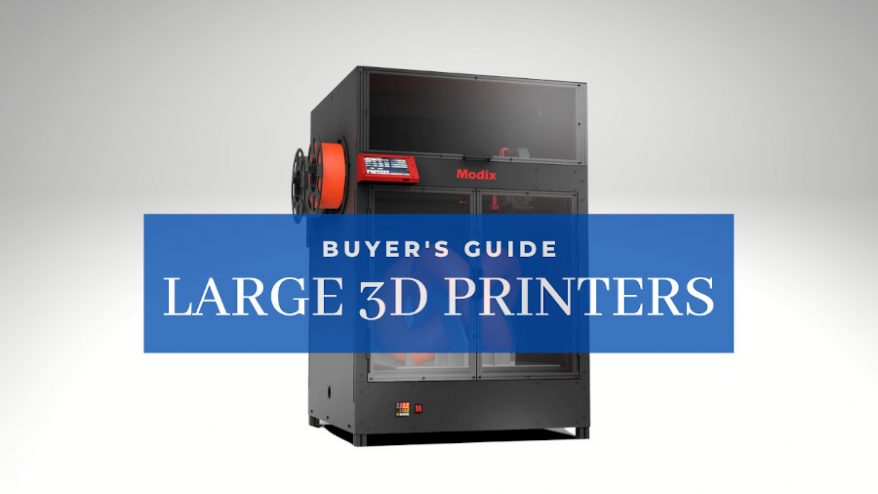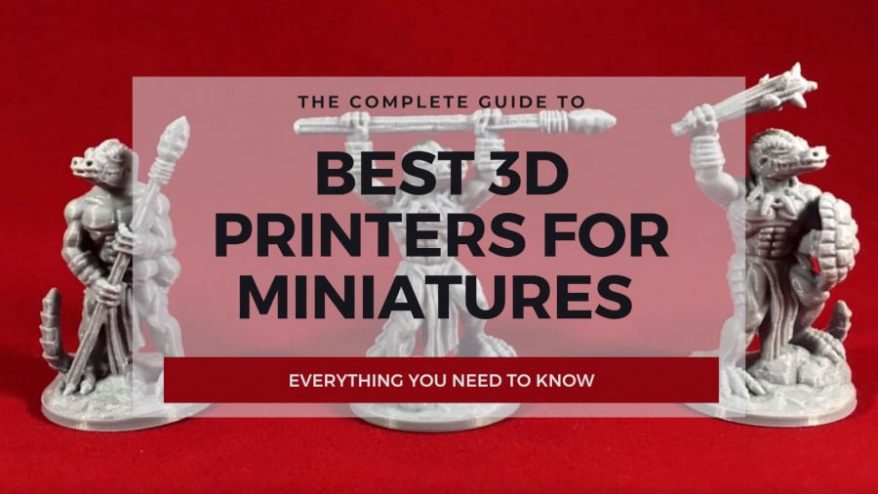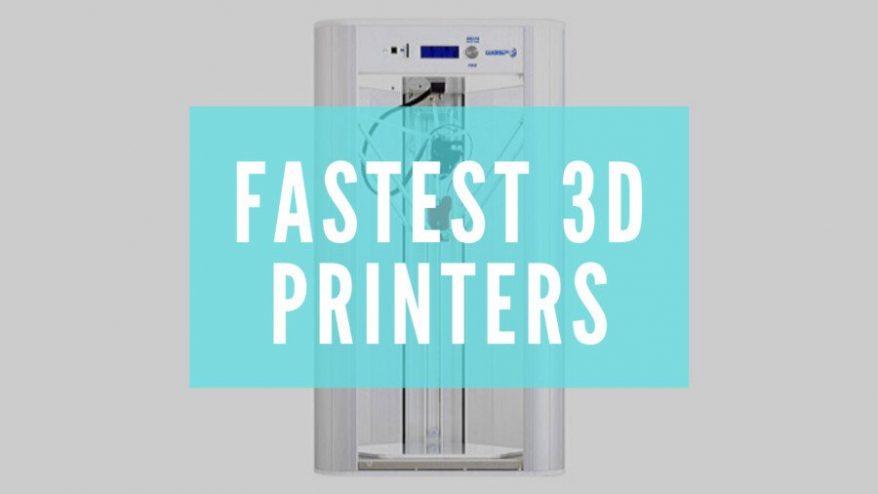We’ve leveraged our collective expertise and experience to recommend the best 3D printers under $2000.
$2000 sits in a sweet spot of sorts, bridging the gap between consumer 3D printers and hulking professional-grade machines. We’ve picked the best for each of the main use-cases in this price range, including resin and FDM printers.
Best 3D Printers Under $2000
1. Qidi Tech X-Max
- Price: Check price on Amazon here
- Build volume: 300 x 250 x 300 mm
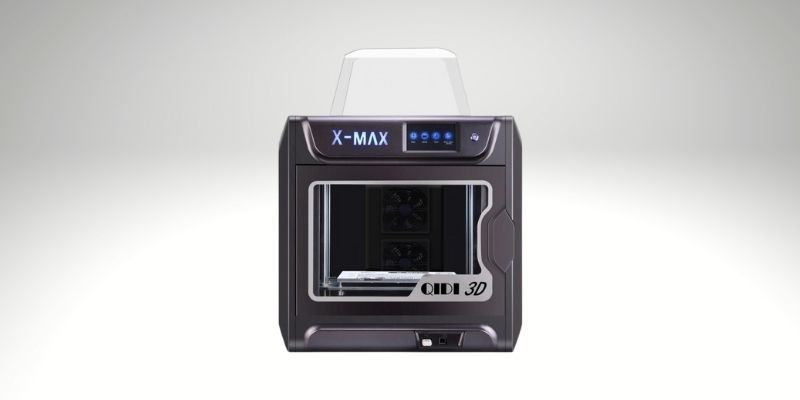
Pros
The enclosed design prevents warping.
WiFi connectivity.
Large 5-inch touchscreen display.
Cons
No filament runout sensor.
The Qidi Tech X-Max may not be the freshest-faced 3D printer out there, but you’ll invariably find hordes of makers still happy to fawn over its impressive feature list and print results.
In our estimation, the Qidi Tech X-Max is as much an investment in a machine capable of printing with more temperamental and exotic materials out-of-the-box, as a down payment for consistency. Qidi Tech X-Max’s print quality rarely wavers, easily one of this printer’s best qualities.
The fully enclosed chamber ensures uniformly distributed temperatures, crucial to marshaling materials like carbon fiber, nylon, and PC, which the X-Max deftly handles. The Qidi Tech X-Max is no slouch when it comes to wrangling staple ABS and PLA filament into stellar prints, either.
With a roomy 300 x 250 x 300 mm, there’s enough printing real estate to fuel all manner of passion projects, whether that’s figurines, functional parts, or products to stock a modest Etsy shop.
The printer comes fully assembled and packed to the rafters with useful features, such as assisted bed leveling, touchscreen functionality, Qidi’s effortlessly straightforward Cura modded slicer, and a removable magnetic plate.
For demanding hobbyists and even burgeoning small businesses looking to prototype and iterate before making the jump to the production line, the Qidi X-Max is a versatile and affordable pick.
2. Creality CR-5 Pro – A Versatile ABS/PLA-Ready Machine
- Price: $1,199 — Available at Creality official store here
- Build volume: 300 x 225 x 380 mm
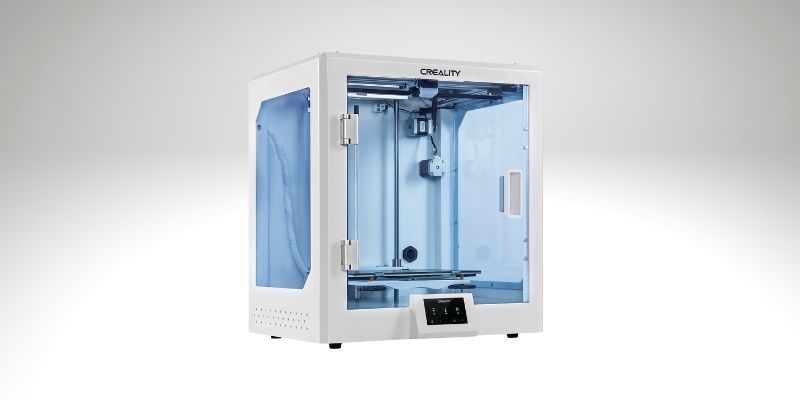
Pros
Sleek, all-metal framed and snow-white cased distinctive look.
Good build volume.
Near silent operation.
Cons
Unsure if they want it to be an industry-grade printer or consumer-level device.
A sleek, all-metal framed and snow-white cased distinctive looker, the Creality CR-5 Pro draws more than a sliver of inspiration from perennial best-of list topper, the Ultimaker S5. No slight intended here; Creality CR-5 Pro looks the part and, fortunately, matches that with some of the smoothest print finish and detail accuracy in the best 3D printer under the $2,000 range.
The Creality CR-5 Pro ships almost entirely enclosed, making it perfectly capable of excelling at ABS and PLA prints equally. A sizable 300 x 225 x 380mm build volume gives you more space to play with than you’ll likely ever need.
An Ultrabase-inspired carborundum glass plate scores points for print anchoring and making easy work of snapping off finished work. Near silent operation, broad slicer compatibility, and an ultra steady Bowden extruder only sweeten the deal.
At times, it feels like the Creality CR-5 is in the throes of an identity crisis, unsure whether it wants to be a bonafide industry-grade printer or consumer-level device peppered with semi-pro niceties. Despite this, we remain fond of the Creality CR-5. For amateur makers, educational settings, and small businesses looking to pump out steady product batches, it’s money well spent.
3. Pulse XE
- Price: Check price at Matterhackers here
- Build volume: 250 x 220 x 215 mm
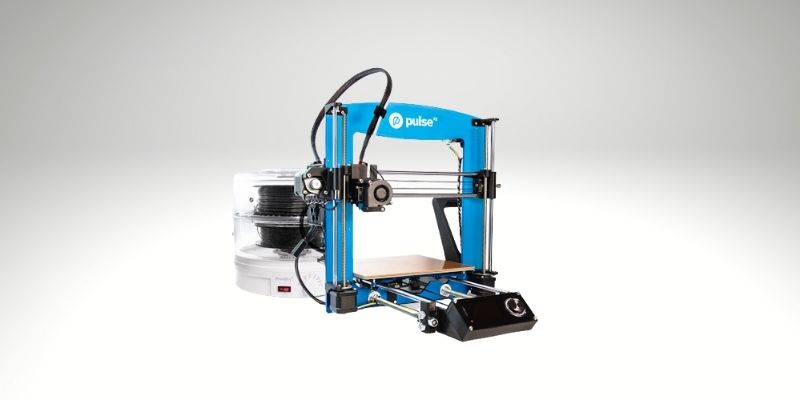
Pros
Capable of delivering precise printed parts.
Thick aluminum frame and does not vibrate.
Cons
The build volume is small for the price.
More akin to a tank in size and stature than a piece of high-tech equipment capable of delivering precision printed parts, the Pulse XE excels at producing rough and ready prints using the toughest variety of filament.
Think NylonX, RYNO, carbon fiber, brassfill, and more besides. No retrofitting or aftermarket upgrades are needed; the Pulse XE does it all and with considerable assurance.
A thick-set aluminum frame and the absence of any discernible vibration or movement during the printing process ensure reliable and consistent results at every turn. The 250 x 220 x 215 mm build volume falls slightly under what you’d expect at this price point. Nevertheless, this caliber of build volume is likely sufficient to handle everything from household items to toys of a respectable size. For the largest projects, we would recommend exploring the larger volumes on our other under $2000 picks.
That said, as far as trade-offs go, Matterhackers has made the right call here as all the other parts are of the highest quality you’ll find for prosumer printers. A hardened steel nozzle and a garolite surfaced plate are worthy highlights, too.
If your 3D printing journey has you considering filaments off the well-beaten PLA and ABS path, it’s hard to go wrong with the Pulse XE at this price point. Ease of use is baked into the printer. We repeatedly marvel at how effortlessly the Pulse XE tackles all manner of projects.
4. Dremel 3D45 – Best For Education and Schools
- Price: Check price on Amazon here
- Build volume: 255 x 155 x 170 mm

Pros
Minimal setup and easy-to-use features.
Ships with great learning resources.
Cons
Lack of experimentation possibilities.
Designed and manufactured by Dremel of power tools fame, the Dremel 3D45 lends itself particularly well to contexts requiring an accessible and predictable printing ecosystem that leaves little to chance. Those in the education sector, in particular, will find a lot to like about the Dremel 3D45, one of the best 3D Printers under $2000.
The printer boasts a relatively large 255 x 155 x 170 mm build volume allied to an enclosed build chamber, semi-automatic bed leveling, heated bed, and printing accuracy of up to 50 microns. It confidently tackles your standard filament types such as ABS and PLA while dabbling in high-temp materials like Nylon. That said, it is geared towards Dremel’s bespoke filaments. When used, these proprietary filaments deliver stunning results without fail, not least thanks to automatic settings adjustment.
Smart touches like sensor tech, carbon filters, and see-through access points for onlookers to satisfy their curious urges without risk of harm bolster the Dremel 3D45’s safety chops. This is ideal for classroom environments where safe learning is crucial. Dremel even includes lesson plans to guide educators and an easy-to-use Dremel Print Cloud and Dremel DigiLab 3D software bundle.
The seasoned hobbyist maker won’t find their fill with the Dremel 3D45, though. The lack of experimentation possibilities and steep downward curve in quality when veering to non-Dremel vetted third-party filaments will cause frustration. As such, we’d strongly urge opting for a more versatile, ‘open’ printer such as the Qidi X-Max if a closed ecosystem limits your aims.
5. Prusa SL1S Speed – Best Resin 3D Printer Under $2,000
- Price: Check latest price at Prusa here / Amazon here
- Build volume: 127 x 80 x 150 mm
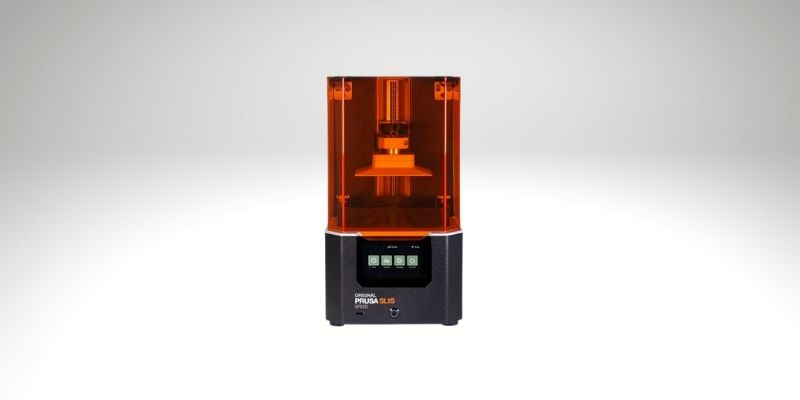
Pros
Significantly upgraded on the previous SL1S.
Superfast.
Cons
Less suitable for beginners.
The original Prusa SL1 was for years lauded as one of the best resin 3D printers on the market, let alone one of the best 3D Printers under $2000. The Prusa SL1S Speed takes those firm foundations and injects, as the name suggests, a good dose of speed and a refined custom LCD panel while also ballooning the build volume to 127 x 80 x 150 mm.
Compared to the original, layer curing drops to under 2 seconds without sacrificing quality print after print, whether small intricate parts or larger resin work. You’d be hard-pressed to find a competitor resin printer in this price range capable of similar high-level definition and sharpness.
For us, the Prusa SL1S Speed stands as the top pick for those weary of time-consuming tinkering and troubleshooting that want dependable resin prints. It’s an ecosystem printer, and Prusa has gone to considerable lengths to streamline everything from the software to the Prusament Resin for systematically reliable results.
6. Prusa XL
- Price: $1,999 — Pre-order available at Prusa store here
- Build volume: 360 x 360 x 360 mm
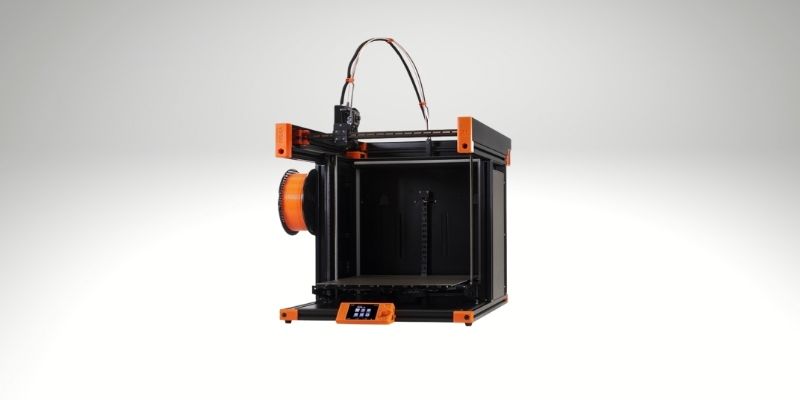
Pros
Ultra-stable CoreXY architecture.
Energy-efficient modular bed design.
Massive build volume.
Cons
Hard to purchase at the moment.
When Prusa announces a new product, the 3D printing community perks up. The Prusa XL may appear on the surface to be an iterative upgrade on the ever-popular Prusa i3, but a gaggle of new technologies bumps it up to the most exciting addition to the Prusa staple in quite a few years.
Among them is integrating an ultra-stable CoreXY architecture, which should do wonders to ensure high-quality results even when maximizing the XL’s massive 360 x 360 x 360 mm build volume. The load cell sensor-equipped ‘Nextruder’ and its automatic first layer calibration, as well as the energy-efficient modular bed design with its array of individually-heated segments, should all but eliminate warping.
It’s unquestionably exciting stuff, and despite no deep-dive into how the Prusa XL performs, the company’s enviable track record means the hype is certainly warranted. Now, the Prusa XL won’t enter production until midway through 2022. The global chip shortage and a flurry of pre-orders likely signal the XL won’t start arriving on doorsteps until possibly 2023.
If you’re looking to own what is likely to be the best 3D Printer under $2000 on the market and can stomach the wait, the Prusa XL is well worth considering.
Best 3D Printer Under $2000 Buyer’s Guide – What To Consider
Here you’ll find a few choice tips to help guide you towards the best 3D printer under $2000 for your needs.
Build Volume
Build volume refers to the size of the prints a printer can tackle. The build area tends to be larger than average in the $2000 range, unlike race-to-the-bottom budget picks, which often sacrifice size to keep costs down. Unless you explicitly need to maximize efficiency with batch part printing, you’ll likely be amply served with any of the printers above.
Filament/Material Types
Filament comes in all manner of robustness, rigidity, color, and price. Choosing the right one depends on your end goals.
PLA and ABS are the most common, not least, because they are inexpensive. If dabbling in more exotic material types, be sure your printer of choice is suited to their specific characteristics, whether that be abrasiveness, toughness, or even the production of excess waste and acrid fumes in the case of resin.
As we approach $2000, we also expect manufacturers to incorporate a high-temperature nozzle along with, ideally, an enclosed build chamber to cater to a broader selection of filament types.
Print Speed
3D printing is the patient person’s pursuit, but within the $2000 range, you’re likely splashing out enough cash for speeds that make professional-grade production viable.
That said, print speeds vary significantly between models and based on the underpinning technology along with filament type, so be sure to check up on print speeds before committing to a purchase.
Bed Leveling and Calibration
Nothing quite saps the joy out of trialing a new 3D printer that hours tackling bed leveling and calibration.
Fortunately, manufacturers are increasingly propping up their wares with assisted or even automatic leveling to ease the process.
At this price point, we’d wager this is almost a necessity and should come as standard. If you aren’t partial to tinkering and need to get up and running fast, we suggest gravitating towards printers sporting these.
Software
Printing prep software comes in one of two categories: proprietary, manufacturer-developed, and third-party open-source. Which one you opt for fundamentally comes down to a choice between a predictable, optimized workflow and scope for experimentation.
An open-source slicer like Cura emphasizes giving the maker the tools to design as they see fit, albeit with a fair slice of tinkering thrown in. On the other hand, proprietary software pairs with a specific printer or series and, as such, is easier to work but less versatile when paired with the best 3D Printer under $2000.
You may be interested in 3D printers in other price ranges:
- Best 3D printers under $200
- Best 3D printers under $300
- Best 3D printers under $500
- Best 3D printers under $1000
- Best 3D printers under $5000
- Best large 3D printers
- Best dual extruder 3D printers

